Trekking in the Himalayas
Trekking in the Himalayas is the ultimate adventure, combining breathtaking landscapes, rich cultural experiences, and physical challenges that draw adventurers from around the globe. Nepal’s Himalayan region is home to some of the world’s most iconic trekking routes, offering options for all levels of experience and endurance. Here’s a glimpse into what makes trekking in this magnificent mountain range so special:
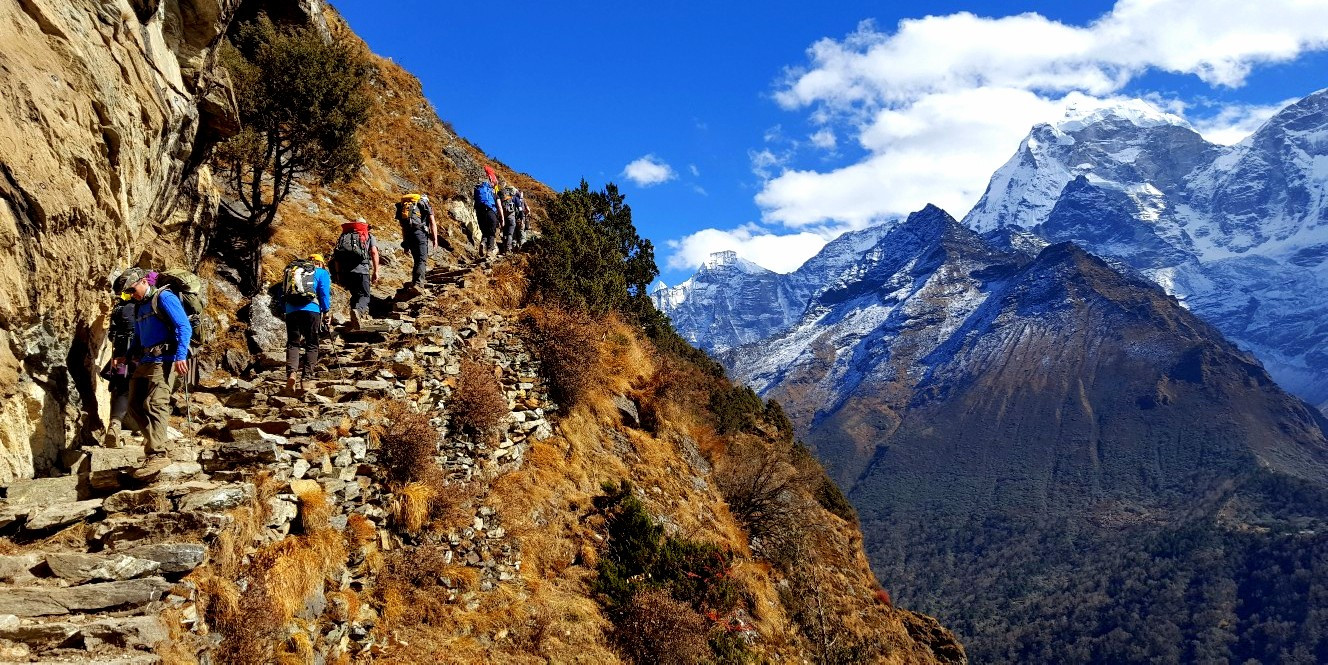
Key Trekking Routes
-
Everest Base Camp Trek: Arguably the most renowned trekking route worldwide, this trail offers stunning close-up views of Mount Everest, the planet’s tallest peak. Spanning about two weeks, the trek reaches an altitude of 5,364 meters at Base Camp. Along the journey, trekkers pass through iconic sites like the vibrant Sherpa hub of Namche Bazaar and the serene Tengboche Monastery, immersing themselves in the unique Sherpa culture.
-
Annapurna Circuit Trek: This trek is celebrated for its diverse scenery and cultural richness. Encircling the Annapurna massif, the journey typically takes 17 to 21 days. Trekkers experience dramatic shifts in the landscape, from lush subtropical forests to the arid high-altitude terrains. The trail also showcases cultural contrasts, from Hindu villages in the foothills to the Tibetan-influenced communities of the Manang Valley.
-
Langtang Valley Trek: As a shorter and more accessible trek, this route is often completed in about a week and is close to Kathmandu. It boasts incredible views of Langtang Ri, Langtang Himal, Lakpha Dorje, and Kimsung. The trek offers a chance to explore ancient Buddhist monasteries, small mountain villages, and high-altitude grazing lands.
-
Manaslu Circuit Trek: Gaining popularity for its remote and pristine landscapes, this trek circles Mount Manaslu, the world’s eighth-highest peak. It also includes a crossing of the dramatic Larkya La Pass, offering some of the most breathtaking views in the Himalayas.
What to Expect
-
Altitude: One of the main challenges is coping with high altitudes. Proper acclimatization is essential to avoid altitude sickness.
-
Weather: Mountain weather is notoriously unpredictable, ranging from sunny days to sudden cold or windy conditions.
-
Accommodation: Options include basic teahouses—family-run lodges offering meals and simple rooms—or camping, depending on the route and preferences.
-
Permits: Trekkers need permits for most routes, such as the TIMS (Trekkers' Information Management System) card and specific national park or conservation area permits.
Cultural Interactions: Trekking in the Himalayas isn’t just about the landscapes—it’s a cultural journey as well. Trekkers often interact with local communities, each with distinct traditions, languages, and spiritual practices. These encounters offer a deeper cultural appreciation and make the experience even more enriching.
Environmental Considerations: The Himalayas’ fragile ecosystems are highly sensitive to tourism. Responsible trekking is crucial, including minimizing waste, respecting wildlife, and supporting local conservation initiatives.
Trekking in the Himalayas is more than a physical adventure; it’s a profound exploration of some of the world’s most remote and awe-inspiring settings. Whether you’re an experienced trekker or a beginner eager to take on a challenge, the Himalayas promise an unforgettable journey filled with natural beauty, cultural discovery, and a sense of accomplishment.
Peak Climbing and Mountaineering
Peak climbing and mountaineering in Nepal offer adventure enthusiasts an unparalleled experience, combining the excitement of scaling high-altitude summits with the reward of breathtaking views from some of the world’s most iconic peaks. With its stunning array of mountains, including several of the world’s tallest, Nepal is a top destination for climbers and mountaineers alike.

Popular Peaks for Climbing
-
Island Peak (Imja Tse): Standing at 6,189 meters, Island Peak is a favorite among beginner climbers seeking a high-altitude mountaineering experience. It is often used as a stepping stone for tackling higher peaks in the Everest region.
-
Mera Peak: At 6,476 meters, Mera Peak is the tallest trekking peak in Nepal. It offers climbers incredible views of five towering 8,000-meter peaks, including Everest, Cho Oyu, Lhotse, Makalu, and Kangchenjunga.
-
Lobuche East: With an altitude of 6,119 meters, Lobuche East is another popular choice. It offers climbers spectacular views of Everest while presenting a slightly more technical challenge compared to Island Peak.
-
Ama Dablam: Known for its striking beauty, Ama Dablam rises to 6,812 meters and is considered a more demanding climb requiring advanced technical skills. Its iconic shape and steep pitches make it a dream climb for experienced mountaineers.
What to Expect
-
Preparation: High-altitude climbing demands both physical and mental readiness. While technical climbing skills can be learned or improved during the climb, maintaining a strong level of fitness is essential.
-
Equipment: Proper gear is critical, including mountaineering boots, harnesses, ropes, ice axes, crampons, and weather-appropriate clothing to ensure safety and comfort.
-
Guides and Porters: Hiring experienced guides and porters is highly recommended for safety and logistical support. Local guides bring invaluable knowledge of the terrain, weather, and climbing techniques.
-
Acclimatization: As with trekking, acclimatization is crucial to managing the challenges of high altitude. Most expeditions include days dedicated to acclimatization to help climbers adjust gradually.
-
Permits: Climbing permits are mandatory for all peaks in Nepal. Costs and requirements vary depending on the mountain’s height and location, especially if it lies within a national park or conservation area.
Safety and Environmental Concerns
-
Safety: Risks such as altitude sickness, unpredictable weather, and avalanches are part of the climbing experience. Staying vigilant, monitoring conditions, and following expert guidance are essential.
-
Environmental Impact: Climbers are encouraged to follow leave-no-trace principles to protect the fragile mountain ecosystems. This includes packing out trash, using designated campsites, and respecting wildlife and the natural environment.
Cultural Aspects: Most climbing expeditions begin in local villages, offering opportunities to interact with indigenous communities. Respecting local customs and traditions not only fosters goodwill but often provides climbers with meaningful cultural insights and memorable experiences.
Peak climbing and mountaineering in Nepal deliver an extraordinary blend of physical challenge, natural beauty, and cultural discovery. Whether you’re an experienced climber looking to expand your horizons or a newcomer to high-altitude adventures, Nepal’s peaks promise an unforgettable experience. These climbs are more than just a journey to the summit—they are milestones that many consider some of the greatest achievements of their lives.
Whitewater Rafting and Kayaking
Whitewater rafting and kayaking in Nepal are thrilling ways to experience the country’s incredible landscapes while navigating its powerful, fast-moving rivers. Fed by the melting snow of the Himalayas, these rivers carve through dramatic gorges, flow past ancient villages, and wind through lush forests, offering adventurers a perfect mix of excitement and natural beauty.
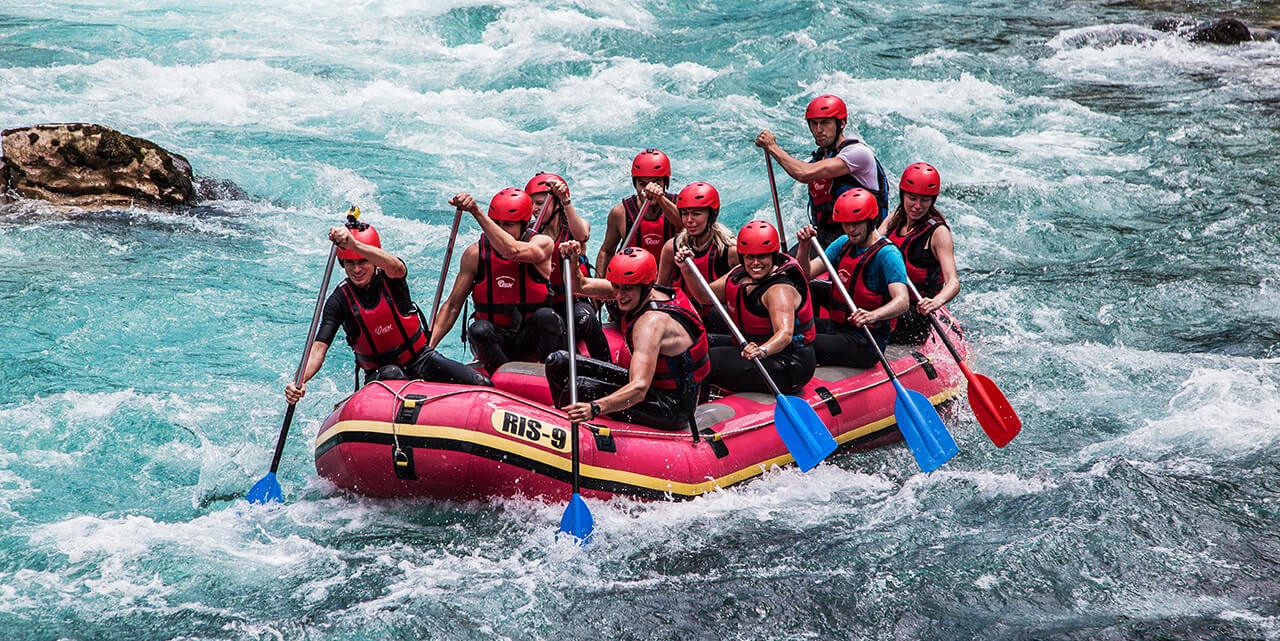
Popular Rivers for Rafting and Kayaking
-
Trishuli River: Located conveniently between Kathmandu and Pokhara, the Trishuli River is a top choice for both beginners and seasoned rafters. With Class III-IV rapids, it’s ideal for day trips or short excursions lasting two to three days. Its accessibility and scenic beauty make it one of Nepal’s most popular rivers for rafting.
-
Bhote Koshi River: For thrill-seekers, the Bhote Koshi River delivers an adrenaline-packed adventure. Known for its steep, continuous rapids that reach up to Class V, this river offers one of the most intense rafting and kayaking experiences in Nepal.
-
Sun Koshi River: The Sun Koshi stretches over 270 kilometers and is perfect for multi-day expeditions, typically lasting 7 to 9 days. Its varied rapids and remote surroundings allow rafters to immerse themselves in Nepal’s untouched wilderness and serene landscapes.
-
Kali Gandaki River: Named after the goddess Kali, the Kali Gandaki flows through one of the world’s deepest gorges. It offers a mix of moderate to challenging rapids (up to Class IV) and breathtaking views of the Annapurna and Dhaulagiri mountain ranges, combining adventure with stunning scenery.
What to Expect
-
Seasons: The best times for rafting and kayaking in Nepal are from September to early December (post-monsoon) and March to May (spring). These periods offer optimal water levels and clear weather.
-
Guided Tours: For a safe and enjoyable experience, it’s recommended to join guided tours with reputable operators. Trained guides ensure your safety, provide expert navigation, and often share fascinating insights about the region.
-
Equipment: Tour operators typically supply all essential gear, including life jackets, helmets, paddles, and boats. It’s advisable to wear comfortable, quick-drying clothes and secure footwear.
-
Safety: Before any trip, participants receive a detailed safety briefing. Following the guide’s instructions and staying aware of your surroundings are key to enjoying a safe adventure.
Environmental and Cultural Considerations
-
Environmental Impact: Rafters and kayakers are encouraged to protect the environment by minimizing waste, using eco-friendly products, and avoiding disturbances to wildlife and natural habitats.
-
Cultural Sensitivity: Many rivers flow past sacred sites and traditional villages. Visitors should respect local customs and traditions, especially when interacting with communities or camping near villages.
Whitewater rafting and kayaking in Nepal are more than just exhilarating activities—they offer a unique way to connect with nature and the country’s vibrant culture. Each stretch of the river brings new adventures, from thrilling rapids to serene moments surrounded by spectacular scenery. Whether you’re an experienced paddler or trying these activities for the first time, Nepal’s rivers promise an unforgettable journey filled with excitement, beauty, and cultural discovery.
Paragliding and skydiving
Nepal, renowned for its towering peaks and dramatic landscapes, offers unforgettable aerial adventures that rival its ground-based thrills. Paragliding and skydiving here are more than just activities—they are extraordinary experiences enriched by panoramic views of the majestic Himalayas and the rugged beauty of Nepal’s terrain.
.JPG)
Paragliding in Pokhara
Pokhara, a serene lakeside town nestled at the base of the Annapurna range, is Nepal’s premier destination for paragliding. This activity allows you to glide through the skies like a bird, taking in spectacular vistas of lakes, temples, monasteries, and the mighty Himalayas.
-
Launch Sites: The most popular launch site is Sarangkot, located at an altitude of approximately 1,600 meters. Its elevation ensures ideal wind conditions and unmatched views of the Annapurna and Dhaulagiri ranges.
-
Experience: No prior training is required for tandem flights, as skilled pilots handle all the navigation, guaranteeing a safe and enjoyable experience.
-
Season: The prime months for paragliding in Pokhara are from September to early June. October and November are particularly favored for their clear skies and perfect wind conditions.
Skydiving near Everest
For adrenaline junkies seeking the ultimate high, skydiving near Mount Everest offers an unmatched adventure. Plunging from a plane with the world’s highest peaks as your backdrop is a once-in-a-lifetime experience.
-
Drop Zone: The primary drop zone is Syangboche Airport, situated at 3,780 meters. The dive offers an exhilarating freefall with breathtaking views of Everest and its surrounding giants.
-
Packages: Skydiving in this region is typically part of an all-inclusive package featuring helicopter flights to the drop zone, guided tours, and even luxury accommodations.
- Season: This adventure is usually available during October and November when the weather is stable, providing crystal-clear views of the Himalayan landscape.
Safety and Preparation
-
Safety Measures: Both paragliding and skydiving are conducted under stringent safety protocols, with experienced pilots and instructors ensuring your well-being. Participants are provided with all essential safety equipment, including helmets, harnesses, and emergency parachutes.
-
Physical Requirements: While peak fitness isn’t necessary, a reasonable level of physical health is required to manage the adrenaline rush and handle the minor impacts during landing.
-
Regulations: These activities are regulated by Nepal’s aviation authorities, ensuring that operators follow strict guidelines for safety and quality.
Environmental and Cultural Impact: Taking part in aerial adventures also carries the responsibility of respecting the environment and local culture. Operators are increasingly mindful of conducting activities in harmony with nature and the communities in these areas.
Paragliding and skydiving in Nepal offer more than just the thrill of flight—they provide a unique opportunity to witness the geographical and cultural richness of the country from above. These adventures are made unforgettable by the awe-inspiring beauty of Nepal’s landscapes and the serenity of its skies. Whether you’re gliding over the tranquil expanse of Pokhara or free-falling amidst the Himalayan giants in the Everest region, these experiences promise memories that will last a lifetime.
Jungle Safari in National Parks
Nepal isn’t just a paradise for mountain adventurers; it’s also a sanctuary for incredible biodiversity. The national parks of Nepal, particularly those in the Terai region, offer a unique opportunity to experience wildlife in its natural habitat. From spotting rare species to immersing yourself in lush jungles, a jungle safari in Nepal is an unforgettable adventure.
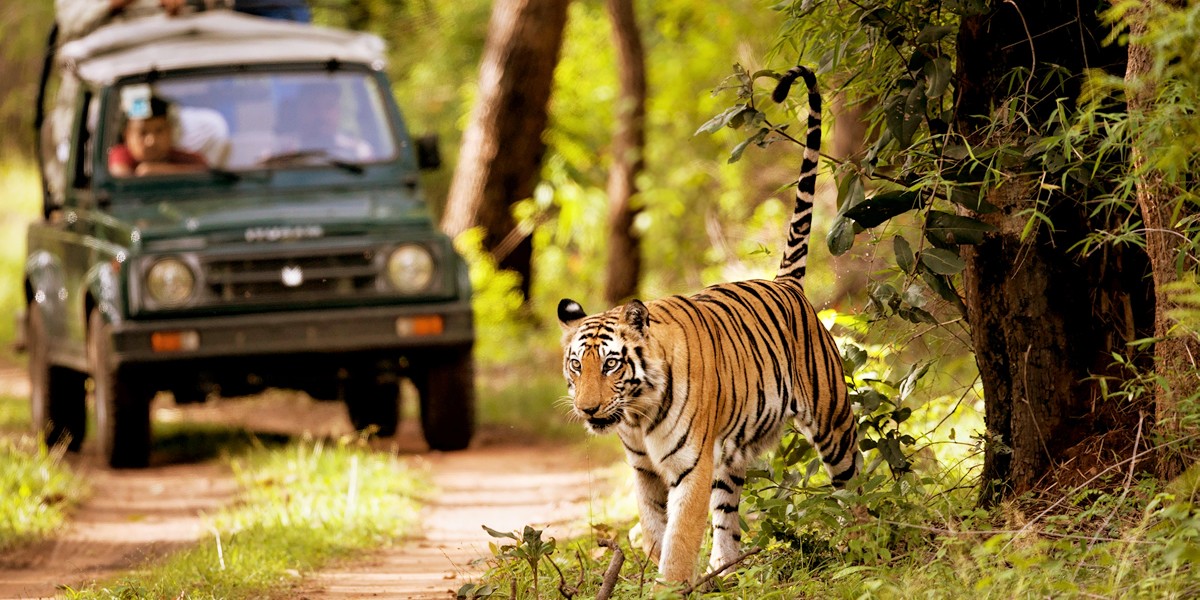
Chitwan National Park
Chitwan National Park, Nepal’s oldest national park, is famous for its remarkable conservation efforts and diverse wildlife. Recognized as a UNESCO World Heritage Site in 1984, the park is a treasure trove of rich flora and fauna.
-
Wildlife: The park is home to the majestic Bengal tiger, the one-horned rhinoceros, leopards, sloth bears, and numerous species of deer and monkeys. Over 500 bird species, from peacocks to kingfishers, also call Chitwan home.
-
Safari Options: Explore the park on a jeep safari to cover vast areas or opt for an elephant-back ride for a unique vantage point to observe wildlife.
-
Best Time to Visit: The ideal time to visit Chitwan is between October and March, when cooler weather and clear visibility make wildlife viewing optimal. The monsoon season (June to September) is less suitable due to heavy rains and flooding.
Bardia National Park
For those seeking a quieter, more intimate wildlife experience, Bardia National Park is the perfect destination. Less crowded than Chitwan, Bardia offers unspoiled wilderness and is considered one of South Asia’s best locations to spot the elusive Bengal tiger in its natural habitat.
-
Wildlife: In addition to tigers, Bardia is home to elephants, rhinoceroses, crocodiles, and the rare Gangetic dolphin in the Karnali River. Bird enthusiasts will find an array of species to admire.
-
Activities: Popular activities include jungle walks, jeep safaris, and river excursions. You can also visit nearby Tharu villages to experience the culture of the local indigenous community.
-
Best Time to Visit: As with Chitwan, the best time to visit Bardia is between October and March for the best wildlife sightings and favorable weather.
Safari Ethics and Safety
-
Guided Tours: Always embark on safaris with experienced guides. Not only do they ensure your safety, but they also make sure the wildlife is observed respectfully and responsibly.
-
Respect for Wildlife: Maintain a safe distance, minimize noise, and avoid actions that could stress or harm the animals.
-
Conservation Efforts: Many safari operators contribute to conservation projects and local community welfare. Choosing operators that prioritize sustainable tourism helps protect the ecosystems and benefit the surrounding communities.
A jungle safari in Nepal is more than just an exciting way to see exotic wildlife—it’s a chance to connect with nature and appreciate the intricate balance of the ecosystem. Whether you’re exploring the dense forests of Bardia or traversing the expansive grasslands of Chitwan, each safari promises thrilling encounters with Nepal’s unique fauna. These adventures also provide valuable insight into conservation efforts, leaving you with unforgettable memories and a deeper respect for the natural world.
Bungee Jumping
Nepal offers an unparalleled setting for bungee jumping, blending the thrill of free-fall with the country’s breathtaking natural beauty. This adventure is about more than just the leap—it’s also about the stunning locations that make the experience truly unforgettable.
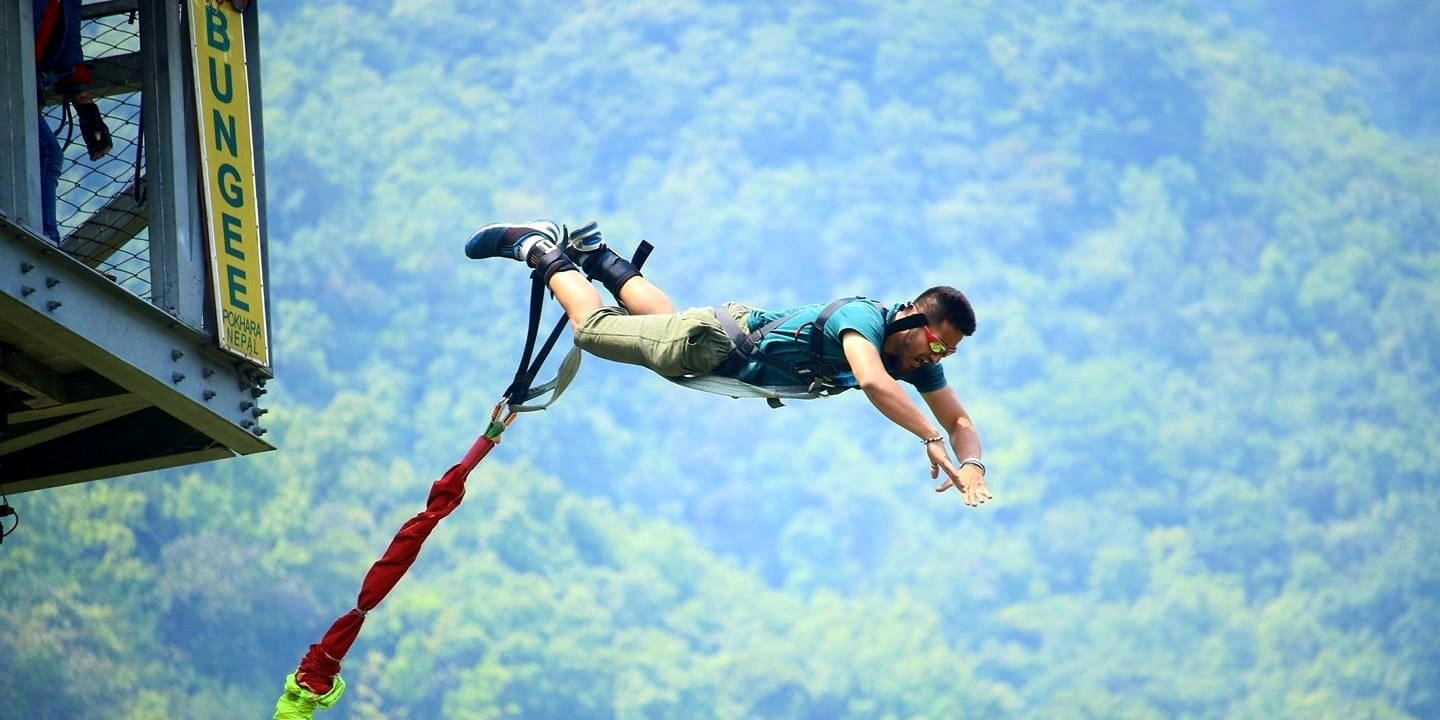
The Last Resort: Bungee Jumping Near the Tibetan Border
The Last Resort, located near the Tibetan border and just a three-hour drive from Kathmandu, is Nepal’s most renowned bungee jumping destination. Nestled among lush hills and rugged terrain, it provides the perfect backdrop for an adrenaline-filled dive.
-
The Jump: The leap is made from a 160-meter-high suspension bridge spanning the roaring Bhote Koshi River, one of Nepal’s wildest rivers. It’s one of the longest free-falls in the world, offering a rush like no other.
-
Safety: Known for its strict safety protocols, The Last Resort employs highly experienced international jump masters and uses top-quality equipment that adheres to European safety standards.
-
Experience: First-timers are welcome, and no prior experience is required. The combination of professional guidance and jaw-dropping scenery makes it an ideal spot for your first jump.
HighGround Adventures: A Sky-High Leap in Pokhara
Pokhara, famous for its serene lakes and Himalayan views, offers another popular bungee jumping destination through HighGround Adventures. This newer site has gained a reputation for its stunning scenery and accessibility.
-
The Jump: The platform is 70 meters high and overlooks the scenic Phewa Lake and the Annapurna mountain range. While slightly less intense than The Last Resort, it delivers an equally thrilling experience.
-
Activities: In addition to bungee jumping, HighGround Adventures offers zip-lining and other adventure sports, making it a go-to spot for thrill-seekers.
-
Accessibility: Located just outside Pokhara’s main city area, this site is convenient for tourists who want a high-energy activity close to their accommodations.
- Best Time for Bungee Jumping: Bungee jumping is available year-round in Nepal, but the best seasons are the dry months from September to November and March to May. These times feature clear skies and stable weather conditions, which enhance both safety and enjoyment.
Preparing for Your Jump
-
Physical Requirements: While no special fitness is needed, participants must be in good health. Weight and age restrictions are typically in place to ensure safety.
-
Mental Preparation: Bungee jumping is as much a mental challenge as it is physical. Preparing yourself mentally to leap can make the experience even more rewarding.
-
Clothing: Wear comfortable, secure clothing. Avoid loose items like sandals or jewelry that could fall off during the jump.
Bungee jumping in Nepal offers more than just an adrenaline rush—it’s a chance to experience the country’s natural wonders in a unique way. Whether you’re diving from a bridge above the raging Bhote Koshi River or taking the plunge with the Annapurna range as your backdrop, Nepal’s bungee jumping locations provide an unforgettable adventure that combines heart-pounding excitement with the awe-inspiring beauty of the Himalayas.
Rock Climbing
While Nepal is best known for its towering Himalayan peaks, it also offers incredible opportunities for rock climbing enthusiasts. This adventure tests your strength, endurance, and technique while immersing you in some of the world’s most stunning landscapes. Whether you’re a beginner eager to try climbing or a seasoned pro seeking new challenges, Nepal’s rock climbing destinations cater to all skill levels.

Popular Rock Climbing Sites in Nepal
-
Nagarjun Forest Reserve: Located just outside Kathmandu, Nagarjun Forest Reserve is a convenient choice for those looking to enjoy a quick climb without venturing too far from the city. The routes here are suitable for beginners and intermediate climbers, making it an excellent option for both practice and exploration.
-
Hattiban: Nestled at the southern edge of the Kathmandu Valley, Hattiban is a more advanced climbing site. With steep and technical rock faces, it offers an exciting challenge for experienced climbers. The stunning views of the Himalayan foothills add to the thrill of the climb.
-
Bimal Nagar: Situated between Kathmandu and Pokhara, Bimal Nagar provides a variety of climbing routes on high-quality limestone. Overlooking the Marshyangdi River and the majestic Manaslu range, it’s a picturesque spot that caters to climbers of all abilities.
-
Pokhara: Pokhara is famous for paragliding and trekking, but it also boasts excellent rock climbing spots. Areas near Sarangkot offer climbers breathtaking views of the Annapurna massif and Phewa Lake, creating a perfect blend of adventure and natural beauty.
What to Expect When Rock Climbing in Nepal
-
Seasons: The best times for rock climbing are spring (March to May) and autumn (September to November). These months feature stable weather, avoiding the heavy monsoon rains and the bitter cold of winter.
-
Guided Climbs: Many climbing sites provide professional guides and instructors to ensure safety and help you hone your skills. These guided experiences often include climbing gear rentals.
-
Gear: Essential equipment includes climbing shoes, harnesses, ropes, carabiners, and helmets. If you don’t have your own, local agencies offer rentals.
-
Safety: Safety is a top priority. Nepal’s climbing sites follow international safety standards, and climbers are encouraged to adhere to the instructions and guidelines provided by their guides.
Climbing Clinics and Courses: For beginners, several organizations in Kathmandu and Pokhara offer climbing courses that teach the fundamentals and safety procedures. These clinics are ideal for learning under the guidance of skilled professionals and are a great introduction to the sport.
Environmental Considerations: As with any outdoor activity, it’s essential to minimize your impact on the environment. Follow leave-no-trace principles, avoid damaging the natural rock faces, and ensure that you leave the area clean and litter-free.
Rock climbing in Nepal is more than just a physical challenge—it’s a chance to immerse yourself in breathtaking surroundings. With the Himalayas as your backdrop, culturally rich villages nearby, and opportunities to combine climbing with trekking or other adventures, Nepal offers a truly unique experience. Whether you’re bouldering, top-roping, or lead climbing, the rock faces of Nepal promise an exhilarating and unforgettable adventure.
Tips for Adventure Tourism in Nepal
Adventure tourism in Nepal, with its varied landscapes and vast natural beauty, offers a multitude of exhilarating activities. To ensure a safe and enjoyable experience, here are some essential tips:
Research and Plan Thoroughly
-
Understand the specific requirements and challenges of the adventure activities you plan to undertake, whether it’s trekking, peak climbing, rafting, or any other.
-
Study the best seasons for each activity. For example, the best time for trekking is typically during the pre-monsoon (spring) and post-monsoon (autumn) seasons.
Choose the Right Gear
-
Equip yourself with the appropriate gear for your chosen activities. For high-altitude treks, ensure you have warm clothing, sturdy boots, and other essential trekking gear.
-
Rent equipment locally if possible to save on travel weight and support local businesses.
Hire Experienced Guides
-
Especially for activities like mountaineering and trekking in remote areas, an experienced guide is invaluable. They offer not only navigation and safety but also insights into local culture and natural history.
-
Check the credentials and reviews of the tour operators to ensure they are reputable and have safety measures in place.
Acclimatize Properly
- High-altitude adventures require time for your body to adjust to lower oxygen levels. Schedule acclimatization days in your itinerary to reduce the risk of altitude sickness.
Stay Hydrated and Nourished
- Dehydration can be a significant risk, especially at high altitudes. Drink plenty of water and eat balanced meals to maintain energy levels.
Respect Local Culture and Environment
-
Learn about and respect the local customs and traditions. Always ask for permission before taking photos of people.
-
Follow environmental best practices such as disposing of waste properly, staying on marked trails, and minimizing your ecological footprint.
Prepare for Emergencies
-
Carry a basic first aid kit and know how to use it. Include items for common issues like blisters, cuts, and altitude sickness.
-
Ensure you have travel insurance that covers emergency evacuation and medical expenses.
Check for Permits and Regulations
- Some areas in Nepal require special permits to visit, especially in restricted regions and national parks. Ensure you have all necessary permissions to avoid any legal issues.
Embrace Flexibility
- Weather and other unforeseen circumstances can affect your plans. Be flexible and willing to adjust your itinerary as needed for safety and comfort.
Stay Connected
- While it's nice to disconnect, having a way to communicate can be crucial in emergencies. Consider renting a satellite phone or ensuring you have local SIM cards if you're venturing into remote areas.
By following these tips, you can enhance your adventure tourism experience in Nepal, making it as memorable and safe as possible. Whether you’re scaling the high peaks or navigating the rushing rivers, preparation and respect for the environment and local communities will pave the way for a rewarding journey.
Nepal stands as a top destination for adventure enthusiasts, offering an incredible variety of thrilling activities amidst some of the world’s most breathtaking landscapes. Whether it’s trekking through the majestic Himalayas, soaring above Pokhara while paragliding, conquering the rapids of its roaring rivers, or exploring the rich biodiversity of Chitwan and Bardia on a jungle safari, Nepal has something for every kind of adventurer. From scaling rugged cliffs to taking the leap with a bungee jump over the Bhote Koshi River, every experience is more than just an adrenaline rush—it’s an opportunity to connect with nature, embrace local cultures, and support conservation efforts. For those ready to explore, push their limits, and create lasting memories, Nepal delivers adventures that combine natural splendor with a commitment to sustainable tourism, ensuring its wonders can be enjoyed for generations to come.
FAQs for Adventure Tourism in Nepal
Q: What is the best time of year for trekking in Nepal?
A: The optimal times for trekking in Nepal are during the spring (March to May) and autumn (September to November). These months feature stable weather, clear skies, and comfortable temperatures, ideal for trekking.
Q: Do I need a guide for trekking in Nepal?
A: While some treks can be done independently, it's highly recommended to hire a guide for more challenging or remote treks like Everest Base Camp or Annapurna Circuit. Guides provide safety, navigation assistance, and insights into local culture.
Q: What should I pack for a trekking expedition in Nepal?
A: Essential packing items include sturdy trekking boots, layers for varying temperatures, a first-aid kit, water purification tablets, a sleeping bag, sunscreen, sunglasses, and a durable backpack.
Q: Are permits required for trekking in Nepal?
A: Yes, trekking in Nepal typically requires various permits, such as the TIMS card and area-specific permits depending on your chosen trek.
Q: How can I prevent altitude sickness?
A: To prevent altitude sickness, acclimatize properly with gradual ascents and rest days. Stay hydrated, eat regularly, and avoid alcohol. Descend immediately if symptoms like headache or dizziness occur and persist.
Q: What are the risks of adventure tourism in Nepal?
A: Key risks include altitude sickness, sudden weather changes, and difficult terrains. Minimize risks by preparing adequately, using appropriate gear, and adhering to safety protocols.
Q: Can I go paragliding and skydiving in Nepal?
A: Yes, Nepal offers exceptional paragliding and skydiving experiences. Paragliding is popular in Pokhara, while skydiving can be enjoyed with dramatic views of the Himalayas in Pokhara and near Everest.
Q: What wildlife can I expect to see during a jungle safari in Nepal?
A: Jungle safaris in Chitwan and Bardia National Parks may reveal wildlife such as Royal Bengal tigers, one-horned rhinoceroses, elephants, leopards, and various bird species.
Q: Is it safe to go whitewater rafting in Nepal?
A: Whitewater rafting is safe when conducted through reputable operators with experienced guides and the necessary safety gear. Always follow the guide's safety briefings.
Q: How do I choose a reputable adventure tour company in Nepal?
A: Select companies based on positive reviews, recommendations, proper licensing, and their commitment to safety and sustainable tourism practices. Check their guide qualifications and safety records.
For the Nepal tour, please click here.
If you are looking for different kinds of Nepal Tours or Trekking Packages, feel free to contact us.
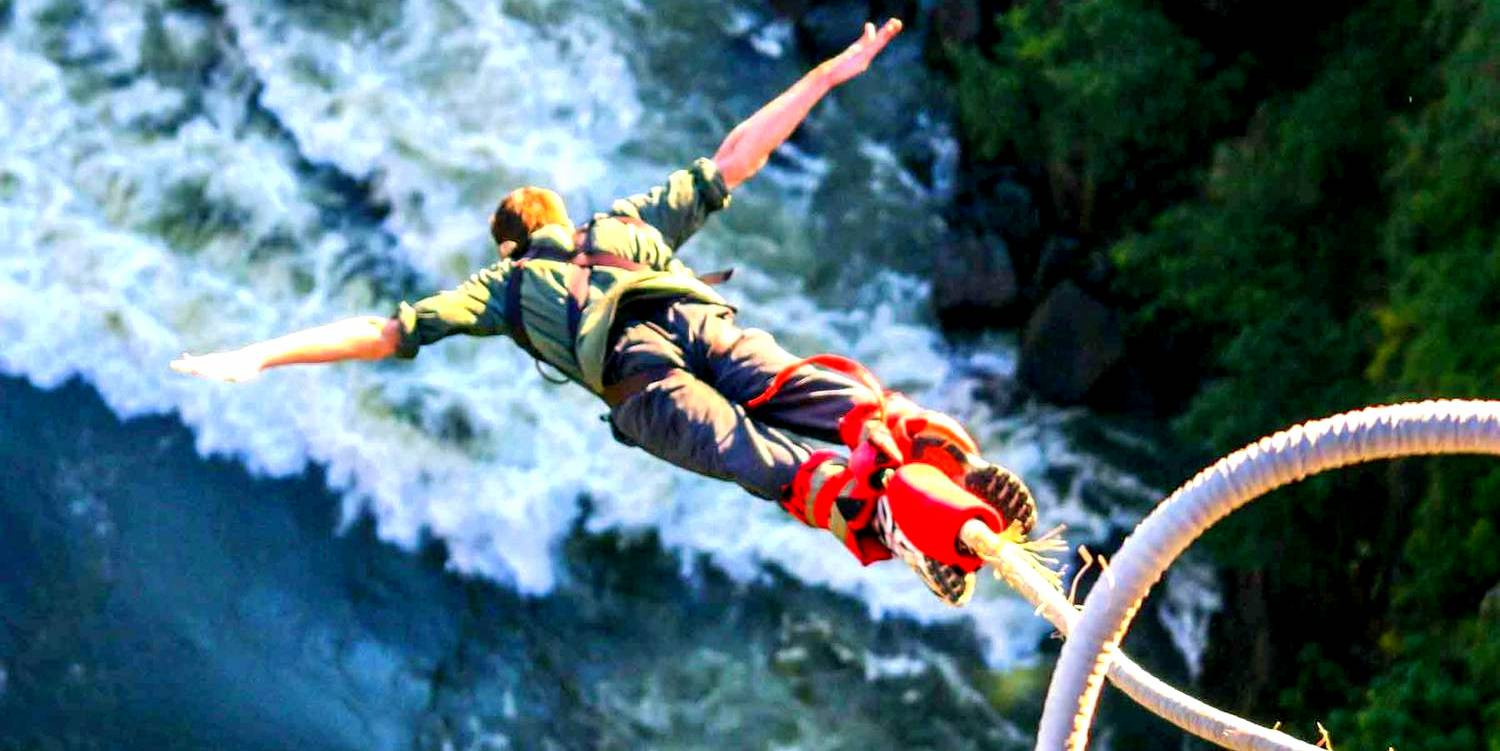




.JPG)



